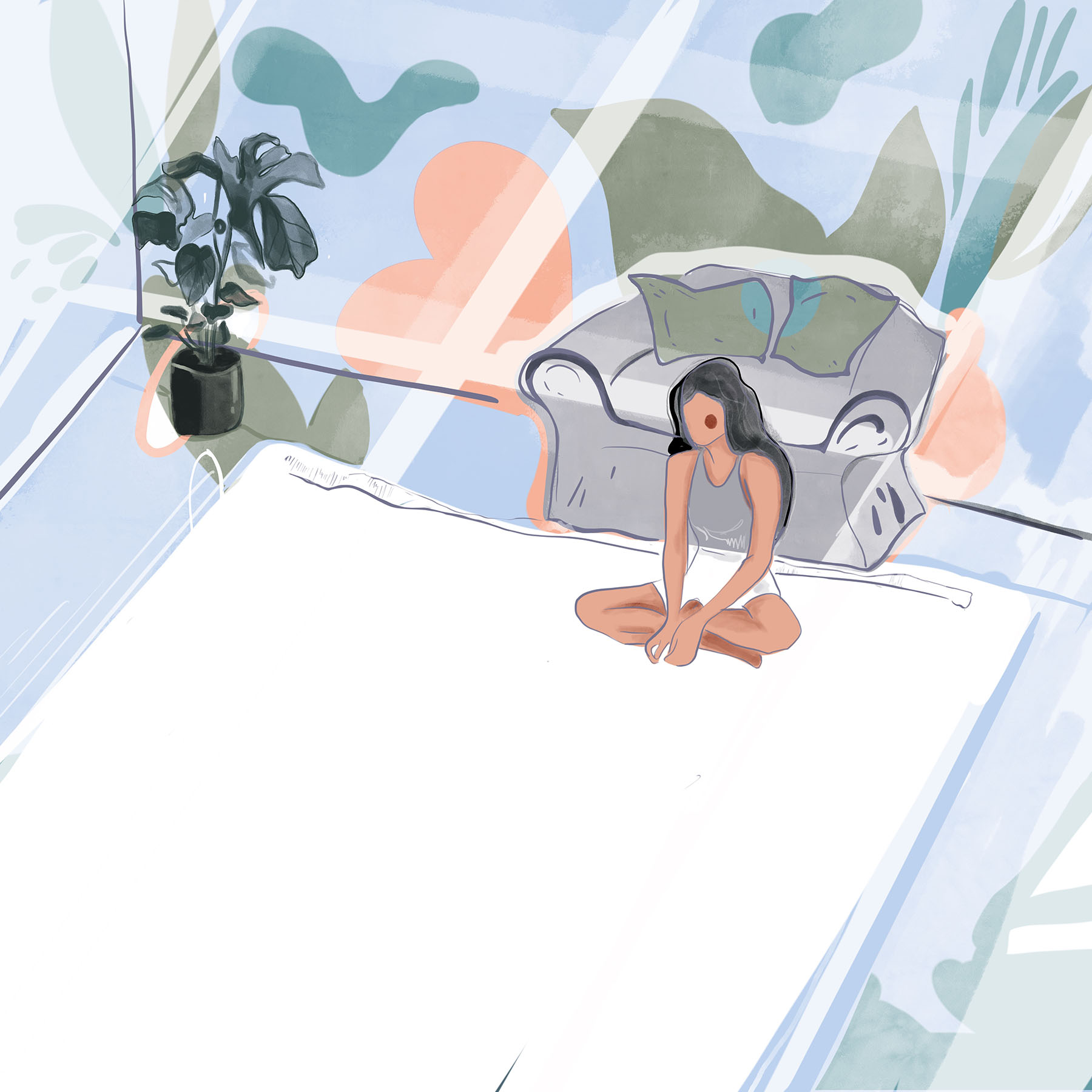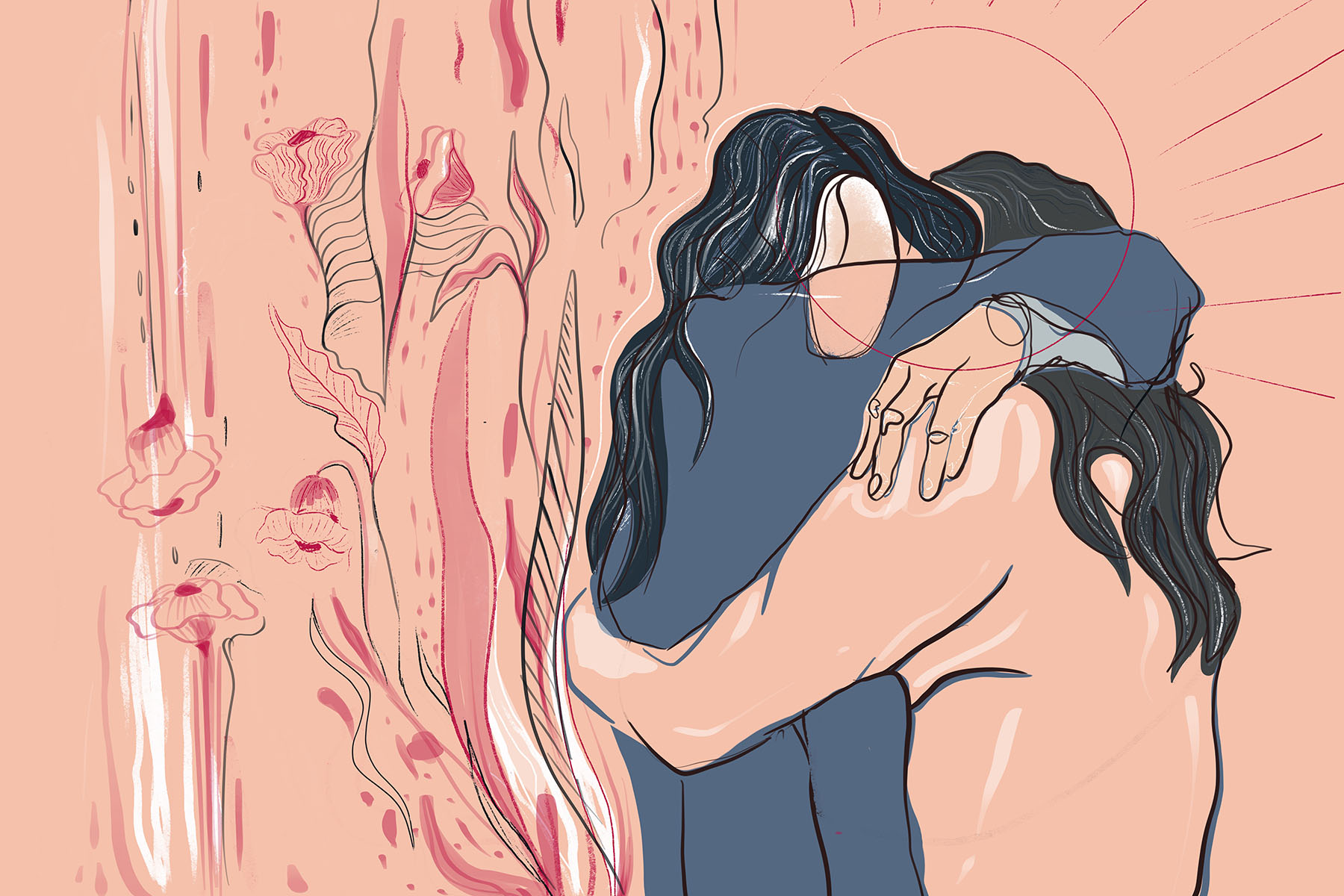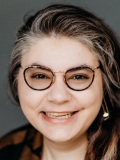This Disability Pride Month, we’re telling the untold stories of women, women of color and LGBTQ+ people. Sign up for our daily newsletter.
Stefanie Lyn Kaufman-Mthimkhulu began doing disability doula work long before they ever heard the term. From the time they were in middle school, they remember “being responsible for big, intense crisis situations” with their friends.
Throughout high school, a close friend self-injured. Kaufman-Mthimkhulu would drive to her house and listen. They would also take care of their friend’s wounds, spend time watching bad TV shows and eat ice cream. What they didn’t do is blame or shame their friend.
Now, years later, disability doula work is a core part of both Kaufman-Mthimkhulu’s personal practice and their job as director of peer support organization Project LETS, which works to organize community-based mental health support for people with disabilities.
For Kaufman-Mthimkhulu, disability doula work is “helping each other survive with our embodied knowledge, tricks and Mad Crip skills.” (Some disabled people have reclaimed “Crip,” short for cripple, as an identity.) They originally were trained more in peer support, which has its roots in addiction recovery and mental health support, but after hearing the queer Korean-American disability justice activist Stacey Park Milbern call this mix of hands-on and emotional support within disability communities “disability doulaing,” Kaufman-Mthimkhulu began to think of their work through that lens.
The term “crip doula” or “disability doula,” coined by Milbern, describes the often-invisible work of disabled people “supporting people rebirthing themselves as disabled or more disabled.” It involves people with disabilities sharing the knowledge and resources that have come about through their lived experiences with others.
Becoming disabled can significantly change a person’s life. Many of those shifts aren’t discussed in a doctor’s office, and there’s no easy how-to guide to follow. Disability doulaing fills those gaps. It can involve practical work like sharing diagnosis journeys and personal experiences with doctors or medication. It can also look like a friend helping another apply for Medicaid or file complicated insurance claims.
In an interview in Leah Lakshmi Piepzna-Samarasinha’s book “Care Work: Dreaming Disability Justice,” Milbern pointed out that naming the need for disability doulaship shines light on a deeply isolating transitional part of life.
“Without crip intervention, we are frequently left alone to figure out how to be our bodyminds and in this ableist world,” Milbern said.

Milbern, who died in 2020, publicly thanked the people who both let her serve as a doula for them and the people who filled that role for her, saying her “survival and resilience has depended on it.”
Working with a disability doula can reduce some of the feelings of shame, grief and loneliness newly disabled people face, said Sami Schalk, associate professor of gender and women’s studies at University of Wisconsin–Madison and author of “Black Disability Politics.” Schalk has also served as a disability doula.
Disability doulaing is most often done as a practice of community care: disabled friends supporting disabled friends. Some people, like Kaufman-Mthimkhulu, are advertising their services as disability doulas, but it’s more often an informal arrangement. Kaufman-Mthimkhulu offers disability doulaing among a number of other services, and all arrangements are billed on a sliding scale.
In the years since the onset of the COVID-19 pandemic, the need for this type of support has increased, particularly with instances of long COVID. The symptoms of long COVID vary, but can include ongoing respiratory, cardiac and neurological issues for years after a COVID infection. Intense fatigue and “brain fog” are some of the most common symptoms that make it difficult for people to work and live in the same way before the illness.
There is no absolute estimate of how many people currently suffer from long COVID, but myriad experts studying its effect on the workforce have given estimates as low as under 400,000 and as high as 4 million workers being affected, according to KFF, the health policy think tank formerly known as the Kaiser Family Foundation.
In other words, a huge amount of people suddenly became disabled and needed help adjusting to a new kind of life.
Throughout lockdown many people with myalgic encephalomyelitis/chronic fatigue syndrome, a chronic illness with many overlapping symptoms to long COVID, offered advice to the newly disabled on everything from how to advocate to themselves to how to grapple with a mysterious medical condition.
In addition to practical tips, a big part of disability doula work is helping people come into a new identity, Schalk said. She noticed online that there were many conversations around the idea and desire for a cure for long COVID. There was some tension: Talking about a cure is often tied up with internalized ableism — a wish to eliminate disability. Many disabilities have no cure, and a focus on future cures can deflect from supporting the current realities of some disabled people.
Disability doulas came into the conversation to gently meet people where they were at — not insisting people had to identify as disabled, and not telling them they were wrong for wishing for a cure. Doulas also explained how cures might not be found in our lifetimes, and helped people work through that.
“That’s actually part of the disability doulaing process, is not forcing identity on people, but just saying, ‘Hey, you know, what do you need? I see this happening for you, are there things that we can support you in?’” Schalk said.
Disability doulaing is a tradition of caregiving pioneered by queer femmes of color, as Piepzna-Samarasinha documented in her book. Disability doulaing emerged from the disability justice movement, which was gestated in the early aughts. The movement formed to center the experiences of the most marginalized people and challenge society’s ingrained ableism through an intersectional lens.
Using the word “doula” has multiple intentional implications, one playing off of traditional doulas’ roles in the birthing process.
“[T]hat is such a huge paradigm shift — to view coming into disability as a birth, not a death, which is how these transition(s) are seen by ableist culture,” Piepzna-Samarasinha wrote.
But another purpose is as an acknowledgment of its gendered labor. All three disability doulas The 19th spoke with talked about Milbern’s origination of the term and personal legacy. They also all said that the work often falls along gendered lines. Caregiving is work that society demands women do without acknowledgment; doubly so for queer people and women of color whose emotional labor is expected and taken for granted, they said. Naming Milbern and the lineage of disability justice, in light of that, is important.
Disability doulaing is a community care practice drawing from lived experience, and there are many paths someone can take to offering that form of care. However, it is often a title bestowed on someone by their community, noted Hannah Sullivan Facknitz, a disabled community organizer. As an “academic crip doula,” Facknitz supports disabled students as they navigate higher education.
Facknitz found themselves in a disability doula role when they began teaching as a part of their graduate program. They were open about being disabled and used a mobility aid. When talking to other disabled students, Facknitz realized many didn’t have disability accommodations due to a lack of understanding of the process at a university level. They started to share their knowledge of how to communicate between different administrative departments, and how to translate medical conditions into requests for accessibility accommodations.
When the pandemic hit, Facknitz saw their students begin to show signs of trauma. As someone with PTSD, they recognized some of the symptoms and increasingly began supporting the mental health of their students.
“A lot of disabled people, after they’ve been disabled for a little bit of time and have lived in disabled community, start doing the crip doula work somewhat automatically, especially if you are queer or [assigned female at birth] or a cis woman,” Facknitz said.
Schalk also added that people who are marginalized in multiple ways are often hyper-visible in their communities, which can be part of the reason they approached more often for help. That was certainly the case for Facknitz: During lockdown, Facknitz examined their gender and came out as genderqueer in 2021. That public identity shift changed the students who came to them for help.
“It was actually the students who were much more vulnerable, who started showing up in my office, who started coming to me. It was the queer, quiet students, students that didn’t engage during class, the students who were not doing as well in school,” Facknitz said. “I was getting the students I worried about more — you know, the students who were silent.”
Sometimes doulas find themselves supporting parallel journeys as someone comes into a queer or trans identity too.
Recently, lockdown provided “time away from the public eye that allowed for some experimentation potentially in gender presentation, it allowed for distance from family of origin that may have allowed people to just explore more and become more comfortable in being themselves without as much outside context,” Schalk said. Now, those people likely have to transition to being queer in a much more public way, which is where doulaing can be helpful.
There are also some explicit overlaps in queer and disabled experience where these two types of doula work collide. LGBTQ+ people are more likely to have a disability than straight people, and disability is entwined with the trans experience via gender dysphoria or gender-affirming care.
“There’s still some familiar things of helping each other navigate the medical industrial complex that we can see in like doulaing around trans identity, and then doulaing around disability identity,” Schalk said.
Rebuilding support networks is also key whenever someone comes into either queer or disabled identity, Schalk said. For someone newly disabled, maybe the spaces or Pride events they used to frequent are no longer accessible. For someone embracing queer identity, there can be a loss of housing, financial support or friendships.
Most disability doulaing comes from within communities, but especially in the wake of the pandemic many disabled people — new to the identity or otherwise — live in deep isolation. If someone is the only disabled person they know, it can be hard to get the support needed. In that case, it might make sense to seek out a disability doula.
Social media can be a great place to start.
“When I am looking for a care worker, I am invested in their experience, training, lineage, approach, and values. I want to know about their philosophy around disability and around healing,” Kaufman-Mthimkhulu said. They also suggested asking questions about healing philosophies, a practitioner’s lived experience and any formal training they have done.
There are no explicit curricula for disability doulaship, but Kaufman-Mthimkhulu is personally working on a “Mad crip doula training” because they see a need for the work and more people equipped to do it.
Facknitz recommended joining local mutual aid groups, which can often be found on Facebook. They are hesitant to suggest anyone join X — or the platform formerly known as Twitter — but if someone has already joined, it can be a good place to follow people involved in disability justice organizing. In general, it’s a good idea to try to plug into existing community infrastructure while being respectful of people’s time.
Facknitz is looking into starting a free disability doula agency to help disabled people navigate academic institutions. They have applied for several grants to support the effort, but haven’t had any luck.
One of the complications of disability doula work is that it is often done by and for people without a lot of cash to spare. It comes from a place of love and care, but also requires significant emotional labor and varying amounts of time. The ethos of the practice is built on values of community care and access for all, which doesn’t come with a paywall. But, as Piepzna-Samarasinha has written, cash is one way disabled people can support each other, too.
No one really understands disability like people who are disabled. That’s what makes disability doulaing essential.
“Medicine views disability as the worst possible outcome, a tragedy, a failure,” Kaufman-Mthimkhulu said. “This care work is critical and revolutionary in a society that engineers and manufactures our death every chance it gets.”







